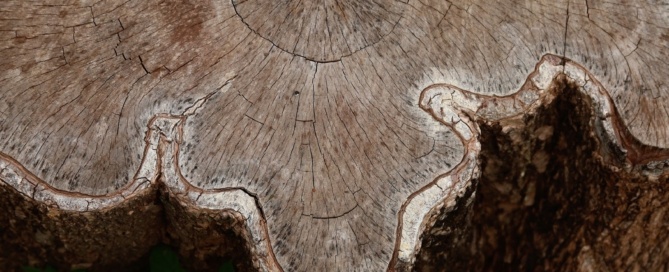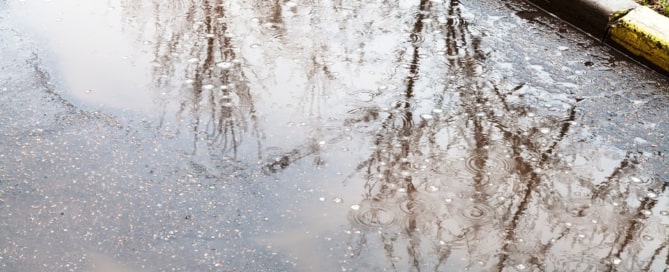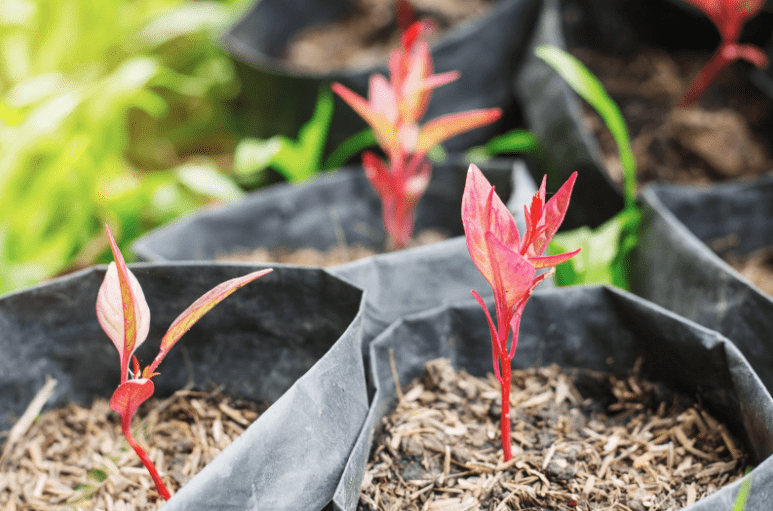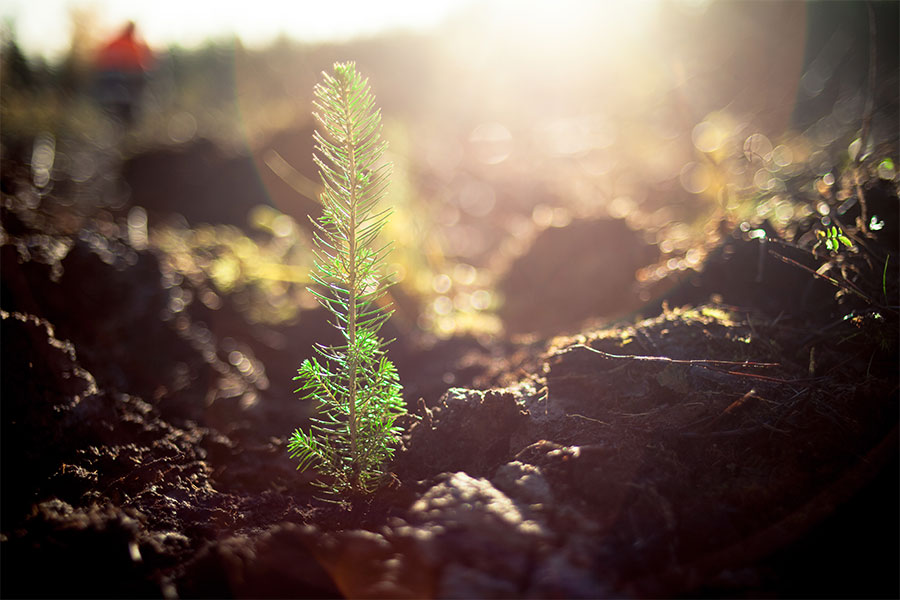Tree Safety
- Home
- Tree Safety
Tree Stump Grinding: What It Is and Why You Might Need It
As a homeowner, you’ve likely heard all about tree planting, pruning, and removal. Planting new trees, after all, is one of the best ways to enhance the natural beauty of your property. Pruning is an essential part of tree care, while removal is crucial for getting rid of old or dead trees.
But what about tree stump grinding? Some homeowners aren’t aware that it’s even necessary.
Let’s look at what tree stump grinding is and why you might need it.
Tree Stump Grinding 101
Tree stump grinding is a stump removal technique.
It involves a machine that grates the stump until it’s just below the soil. In some cases, the stump can be grinded as deep as 12 inches (or more) below the surface. This creates a discrete hole in the ground, letting you re-purpose the area.
The process of tree stump grinding takes just a few minutes. It also produces wood chip mulch, which is placed in the hole for 2 to 3 months. These wood chips steal nitrogen and other nutrients from the area before they start to decompose.
From there, you can spread the wood chips in areas like your garden, planting beds, and walkways. How’s that for resourcefulness?
While stump grinding leaves behind the roots, you won’t have to handle them. They’ll naturally break down in about 10 years.
Tree Stump Grinding Improves Aesthetics and Safety
Tree removal naturally leaves behind a stump. This leftover base can be visually unattractive, especially if your lawn is perfectly landscaped.
Mold, weeds, and insects could also grow on a tree stump and diminish your property’s curb appeal. Plus, if pests and diseases aren’t controlled, they can spread to other plants.
Most importantly, a tree stump is a safety hazard. Since most stumps are just a couple inches high, it’s easy to trip over one. This is dangerous for both kids and adults alike.
Tree stumps also make it difficult to properly mow the lawn. And even if a lawn mower makes it over the stump, there’s a major risk of machine damage.
Tree Stump Grinding vs. Tree Stump Removal
Tree stump grinding is just one technique for removing a tree stump. The other method is tree stump removal, which involves digging up the stump and its roots.
Compared to grinding, tree stump removal is more invasive. It takes more time, money, and powerful machines. Complete removal of a tree stump also leaves a bigger hole in the ground.
On the flipside, this hole offers more of a blank slate than stump grinding. It’s easier to “start over” if you totally remove the stump.
Call the Expert Tree Technicians at Friendly Tree
There isn’t a one-size-fits-all approach for dealing with a tree stump. The best choice depends on your property and what you plan to do with the area.
Luckily, with Friendly Tree, you’ll have personalized guidance every step of the way. Our professional tree technicians in New Jersey are ready to learn about your needs. We’ll also explain what tree stump grinding is and why you might need it.
When the time comes, we can also provide other tree services like tree trimming and tree planting.
For a friendly consultation with Friendly Tree, contact us at (973) 678-8888.
How Trees Help Retain (and Reduce) Stormwater Runoff
Trees offer countless environmental benefits. For example, they cleanse the air by producing oxygen and absorbing carbon dioxide. They also provide homes and food for animals like birds and squirrels. Needless to say, trees can bring immense value and advantages to a natural landscape.
But the benefits of trees don’t stop there. Trees also retain and reduce stormwater runoff, one of the biggest issues of urban and suburban areas. This means they can play a significant role in protecting the local environment.
Why Is Stormwater Runoff an Issue?
We all know rain is important. It replenishes our water sources, “feeds” rivers and lakes, and keeps our grass green and healthy. Rain also provides essential nutrients for agricultural crops and beautiful trees.
The problem is when rain becomes stormwater runoff. This happens when rainfall or melting snow flows over paved surfaces like roads, parking lots, and driveways. Since these surfaces are impermeable, they don’t soak up water. The result is a large volume of water flowing over ground surfaces.
Here’s why this can be bad news:
Flooding and Erosion
If rapid runoff flows into bodies of water, it can disrupt the natural flow and damage local animal habitats. It can also worsen the severity of flooding in urban and suburban neighborhoods.
Sewage Problems
Stormwater runoff can overwhelm local sewage systems, which are full of harmful pathogens and heavy metals. This presents serious public health concerns.
Pollution
When stormwater passes over paved surfaces, it picks up pollutants like pesticides, pet waste, lawn fertilizer, and byproducts from construction sites. The water then pushes these pollutants into local streams and rivers.
Excess Sediment
Similarly, fast-moving runoff forces sediment and residue into bodies of water. This can destroy natural habitats and block sunlight from underwater plant life.
Trees and Stormwater Runoff
While paved surfaces don’t mix well with rainfall, they’re essential components of developed neighborhoods. It’d be difficult to travel around town without surfaces like roads and sidewalks.
The solution? Plant new trees and take care of existing ones. Aside from beautifying our properties and streets, trees can manage stormwater runoff.
They can:
Retain Water
A tree provides a surface for rain to land on. Specifically, its leaves and bark can “intercept” and retain rainfall. This water will then evaporate or end up in the soil.
Decrease Erosion
Likewise, tree canopies intercept rainfall and reduce the risk of erosion.
Absorb Moisture
Water can also collect on fallen leaves. Eventually, the moisture will permeate the soil instead of flowing over paved surfaces.
Roots also absorb the water and aerate the soil, which soaks up moisture. This reduces the accumulation of runoff after a storm.
Plant New Trees and Reduce Stormwater Runoff
You can’t control the weather, but you can control how your property handles heavy rainfall. That’s why it’s important to plant trees to retain and reduce stormwater runoff.
However, managing runoff doesn’t stop at planting new trees. It also involves taking care of the trees you already have. By keeping your existing trees healthy, you can do your part in reducing stormwater runoff.
Friendly Tree is here to help. As a team of certified arborists, we offer professional tree planting services in New Jersey. We also know what it takes to help trees thrive and flourish.
To get a quote or schedule a consultation, contact Friendly Tree at (973) 678-8888.
Building Near Trees: Do’s and Don’ts
If you already have trees on your property, you might wonder about the best practices for adding new buildings. Perhaps you just bought land and you’d like to build a home. Or, maybe you’d like to renovate and expand an existing structure. Regardless of the situation, it’s important to know the do’s and don’ts of building near trees.
This will ensure the structure is built in a way that protects and preserves the structure of each tree. Besides, the last thing you want to do is damage the precious plants during construction!
Before starting your new project, consider these guidelines for building near trees.
DO…
Properly Prune Trees
When it’s time to bring in the construction equipment, you might want to prune your trees to make more space. But if you’re not 100% sure how to trim the branches, this simple move may cause significant harm.
That’s why it’s crucial to practice proper tree pruning techniques. Incorrect pruning can create “wounds” that increase the tree’s vulnerability to harmful insects. Plus, if sap leaks out the wounds, the tree will be robbed of nutrients.A certified arborist can make sure your trees are properly pruned before construction.
Control Nearby Traffic
Prior to building a new structure, make a plan to protect the tree and its roots.
It’s generally recommended to build a fence around the dripline, or the outermost circumference of the canopy’s edge. (This measurement is called the “dripline” because this is where water drips from the canopy to the ground). An even better move is to place the fence further out from the dripline.
By adding a fence around your tree, you can limit physical damage and keep construction machinery away.
Consider Designing Around the Tree
More and more architects are incorporating existing trees into homes, decks, and commercial buildings. This means the trees can stay practically untouched! For example, a deck can be built with a circular opening around a tree.
Of course, this depends on the type of tree and what you are planning to build. Your arborist, builder, and architect can work together to create a design that works for your needs.
DON’T…
Trim the Roots
You might be tempted to trim the tree’s roots in order to make more space. After all, the roots will simply re-grow around the building… right?
Well, not quite. An established root system is extremely complex. If certain roots are removed, the tree may lose its stability, resulting in damage or failure later on. Incorrect root cutting can also deprive the tree of nutrients and water.
Before snipping the roots, consult a professional tree service like Friendly Tree. A certified arborist will be able to determine which roots are safe to cut.
Add Concrete on Roots
It’s not recommended to add concrete (or stones) on an established root system. This can rob the roots of oxygen, nutrients, and water, which will ultimately lead to failure.
For best results, work with a professional concrete company. They’ll know how to handle the roots in a way that allows the tree to thrive.
Dig Trenches Too Close
When building a new structure, you’ll likely need an irrigation system. However, digging trenches within the dripline — or near the tree trunk — can interfere with almost half of the tree’s roots.
Fortunately, it’s possible to dig trenches without harming the roots. The best option is to dig them outside of the drip line, but you can also trench toward the trunk and tunnel underneath. A third option is to trench a third into the dripline and connect the trenches by tunnelling.
There are many do’s and don’ts of building near trees. But with a professional tree service like Friendly Tree, you can take proper precautions before starting construction.
Our certified arborists in New Jersey can make sure the process leaves your trees unharmed. With over 27 years of experience, our team knows precisely what to look for! We’re also happy to provide professional tree services, including tree removal, tree planting, and more.
Have questions? Contact Friendly Tree at (973) 678-8888 to get a quote or schedule a consultation.
What Kind of Tree Should I Plant?
So, you decided to plant a new tree. Congratulations! This is the start of a beautiful landscape that will increase the aesthetics and value of your property.
But before you start mapping your dream garden, it’s important to know what kind of tree you should plant. This depends on the environment you’re planting in. Remember, every tree has different requirements, so it should be planted in an area that meets those needs.
Your climate isn’t the only factor, though. The characteristics of your property matter as well. From existing greenery to nearby pipes, there are many environmental aspects to consider.
Before buying a tree or digging a hole, take the time to do some research. By learning how to choose the best tree for your area, you can ensure it will thrive for years to come. Here are several factors to consider.
Temperature
As you know, North America is a continent of extremely different climates. Therefore, in order to help folks choose the appropriate trees for their area, the USDA created The Plant Hardiness Zones.
Each zone represents an area in the United States or Canada. The zones are divided based on an area’s lowers annual average temperature. In each zone, there are specific trees that can endure the winters in that area.
Before buying and planting a new tree, find your plant hardiness zone. There are 11 zones in total. All you need to do is visit a hardiness zone map and enter your zip code.
Rainfall
When it comes to moisture, every type of tree has different needs. Some trees require constantly wet soil, while others prefer a dry environment. As a result, it’s vital to consider your area’s natural rain patterns throughout the year.
Be sure to acknowledge nearby bodies of water, too. Ponds, for example, will affect the level of moisture in the surrounding soil.
Soil
From clay to sand, soil isn’t a one-size-fits-all component. Every soil has different biological, chemical, and physical characteristics, so you must choose the appropriate trees for your soil type.
Granted, things like pH and draining can be altered with various substances. For instance, you can improve soil drainage by adding organic matter like compost. But for optimal results, it’s wise to pick the most appropriate plants for your property’s soil.
Available Space
Every property is unique, regardless of climate or state. So, be sure to acknowledge the different aspects of your land.
Think about your available space and nearby trees, shrubs, or plants. Over time, the tree’s root system will attempt to establish itself, so it’s essential to provide enough space for both new and existing plants. This will ensure that they don’t have to compete for water and nutrients.
Existing Constraints
Before choosing a tree, consider any existing underground pipes and power lines. Don’t forget about your driveway, sidewalk, and neighbors. Lastly, check any local ordinances and rules as to how far a tree must be planted from the street.
With these environmental aspects in mind, you can determine if you should get a small, medium, or large tree. You’ll also be able to figure out what kind of canopy and foliage will work well with the area.
We’re Here to Help You Choose the Best Trees for Your Property
If you’re not sure what kind of tree you should plant, consult the professionals at Friendly Tree. Since 1989, we’ve offered tree planting services throughout northern New Jersey. We’ll take the time to choose the best species for your property and needs.
This way, you don’t have to worry about all the details on this list. Leave it up to us! Our team of professional arborists knows exactly what to look for.
For a free quote, contact Friendly Tree at (973) 678-8888.
Keeping Your Trees Pest Free
Now that summer is near, New Jerseyans are coming out of the woodwork to soak up the warm weather and sunshine. Unfortunately, so are the pests.
We believe the best approach to pest management starts with healthy, vigorous trees. While few trees are entirely pest-free, healthy trees are much more capable of resisting pests and the damage they cause.
It is rare for a truly vigorous tree to succumb to pests. Here are five key steps you can take to keep the trees on your property free from insect infestations:
Ensure Good Soil Conditions
Perhaps the most significant thing you can do for your trees gives them rich, healthy soil to grow in. Ideally, you should have species well suited to your region’s growing conditions and soil type. Proper drainage is key to avoiding pest problems, and adding compost yearly will provide your trees with the nutrients they need to grow strong.
Be sure not to over-fertilize, as an excess of nitrogen can actually steal nutrients from the soil and leave trees susceptible to pests and disease. Controlling weeds will also help to limit the habitat for creepy crawlies.
Water Correctly
Believe it or not, overwatering is actually more prevalent (and deadly) to trees in urban areas. Too much water can not only cause root rot but invites conditions for pests and disease. Trees with too little water, however, become stressed and vulnerable. Moist, but well-drained, the soil is preferable. Learn how to properly water your trees.
Prune Properly
Regular pruning is one of the best gifts you can give your trees to keep them healthy. Good air circulation in the tree’s canopy is important for warding off infections and infestations. However, when done incorrectly, pruning can actually leave open “wounds” for insects to enter and attack. Pruning done by a certified tree service or arborist will ensure that the branch collar – which contains specialized cells to help the tree heal properly – stays intact.
Don’t Overmulch
Mulch can be a tree’s best friend, but only if you do it right. Mulching too deep can lead to root rot in wet or heavy soils, making the tree susceptible to infestations. Mulching during the late fall, right before the ground freezes, should also be avoided, as it provides a home for pests to overwinter. Read how to mulch your trees the right way.
Clean up in the Fall
Insects and other pests love to hide out in fallen leaves, decaying branches, and fallen fruit. Once the summer season comes to a close, remove any leaves, branches, twigs, seed pods, fruit (on or off the tree) or anything else littering your landscape. If you see the diseased material, dispose of it in the trash. Keeping the ground clean can deter pests from hibernating in your yard for the winter.
What About Spraying?
At Friendly Tree, we believe the first line of defense when it comes to pest control is preventative action. However, if you find yourself fighting an uphill battle with infestations, insecticidal soaps can be particularly effective against aphids, spider mites, whiteflies, thrips, mealybugs and other common pests. We typically encourage avoiding chemical pesticides, as they can do more harm than good if not applied by a professional.
Proactive care really does go a long way in keeping your trees healthy and pest free. If your tree has a bad infestation, it may need to be inspected by a professional and potentially removed.
If your trees need troubleshooting, we can help. Our inspections and assessments are always free.
5 Common Tree Planting Mistakes and How to Avoid Them
With Earth Day just around the corner, tree planting is on the horizon for many home and property owners in New Jersey. Did you know that the best way to ensure your new tree’s long-term health and happiness is with a good start? In this article, we’ll explain how to avoid the most common tree planting mistakes.
When it comes to tree planting, there is a right way and a wrong way. Improper planting methods may set your tree up for poor growth and future structural problems. Following proper methods will allow it to reach its full potential and ultimately, require less maintenance and troubleshooting later on.
Are You Making These 5 Common Tree Planting Mistakes?
Tree Planting Mistake #1. Planting Too Deep
Planting too deep is a common reason for tree decline. In fact, one study found that more than 90 percent of professionally planted trees were planted too deep. Burying the tree’s root collar, either by planting it too deep or by volcano mulching, can cause reduced growth, defoliation, leaf yellowing, girdling roots, branch dieback and even tree death.
Although the tree may seem fine at first, these symptoms can take years to appear. If your tree’s flare is covered – and if it resembles a telephone pole in the ground – it’s buried too deep.
What to do Instead: A good rule of thumb is to never dig the planting hole deeper than the height of the tree’s root ball. Keep the tree’s root flare exposed and keep mulch away from the base of the tree.
Tree Planting Mistake #2. Digging a Hole Too Small
On the other side of the coin is the width of the planting hole. It can be tempting to dig a hole the width of the tree’s root ball – after all, digging is hard work! But planting a tree in a hole that’s too small stifles the growth of new roots and and doesn’t allow them to take hold in the soil as it continues to grow. Newly planted trees in small holes are less stable and have a hard time building a robust root system. Trees in this situation are easily blown over in storms.
What to Do Instead: When it comes to the width of the planting hole, here’s where you’ll want to go big. Dig a shallow hole that is two to three times wider than the root ball. While it may take more time and energy, it’s worth it to create a planting site which will allow your tree’s roots to spread, and will result in fewer problems down the road.
Tree Planting Mistake #3. Planting the Wrong Time of Year
While it may be tempting to take care of all your landscaping tasks in the summer when the sun is shining and the grass is green, summer is one of the worst times to plant a young tree. The summer’s heat can cause extra stress, which makes trees more susceptible to pests and disease (both of which are more active in the warmer months). On the other hand, planting just before freezing temperatures hit can also stress your new tree.
What to do Instead: Spring (after the risk of a hard frost has passed) and fall, especially, are both great times for tree planting in New Jersey. Moderate temperatures, warm soil and cool nights ease a newly planted tree into its new environment and limit potential stressors.
Tree Planting Mistake #4. Choosing the Wrong Planting Site
Now, here’s where the phrase, “Bloom where you are planted” just doesn’t work. Trees have very specific growing requirements and can’t be expected to simply grow anywhere.
Trees requiring full sun will not do well in another tree’s shade, or on the north side of a large structure. Trees with high water needs may suffer if they are planted on a slope, where water easily drains off. All trees have their favorite soil type, and many are sensitive to cold or hot temperatures.
Another commonly overlooked factor is planting a tree too close to structures, sidewalks or driveways. It may look little now, but your tree will develop an extensive root system and some species can grow very quickly. You could end up running into problems with power lines or plumbing.
What to do Instead: Do your due diligence and research your property’s soil type, soil chemistry, drainage and hardiness zone. Then, choose a tree that is looking for the same things. Before digging, always provide plenty of clearance for power lines and structures, and call your utility company to mark underground lines.
Tree Planting Mistake #5. Improper Watering
This may come as a surprise, but more newly planted trees die from overwatering than not enough water. In clay soils, especially, drainage can suffocate the tree’s roots. Improper watering can drown your young tree, or cause it to dry out in the hottest part of the summer. And, believe it or not, trees also require water in the winter, especially those that were planted the season prior.
What to do Instead: The rule of thumb for watering trees is slow, deep and infrequent. Water your tree at planting, again the next day, and then every three days for the next couple of weeks. Once established, trees should be watered to a depth of one foot at the drip line. Water more often during the summer and dry spells, and keep in mind your soil type when watering. Clay soil needs longer watering intervals because it absorbs water poorly, while sandy soil needs shorter intervals more often. Don’t forget to water your tree during dry spells in the winter; even though your tree is dormant, it still requires water to survive.
A new tree is an investment, and cutting corners during tree planting may prove to be very costly later on. If you’re not sure where to start, give us a call.
Friendly Tree Service has been planting trees in New Jersey for 27 years. We hand pick trees from our specialized growers from around the country and can help you select the best type of tree for your landscape, deliver it safely to your property and plant it properly for long-term success. We offer not just a survival guarantee, but a thrive guarantee!
Recent Posts
Archives
- August 2022
- June 2022
- May 2022
- April 2022
- March 2022
- February 2022
- January 2022
- December 2021
- November 2021
- September 2021
- August 2021
- July 2021
- June 2021
- April 2021
- March 2021
- February 2021
- January 2021
- December 2020
- November 2020
- October 2020
- September 2020
- August 2020
- July 2020
- June 2020
- May 2020
- April 2020
- January 2020
- December 2019
- November 2019
- October 2019
- September 2019
- August 2019
- July 2019
- June 2019
- May 2019
- April 2019
- March 2019
- February 2019
- November 2018
- September 2018
- August 2018
- July 2018
- June 2018
- May 2018
- April 2018
- February 2018
- September 2016
- August 2016
- July 2016
- June 2016
- May 2016
- April 2016
- November 2015
- August 2015
- March 2015








Recent Comments